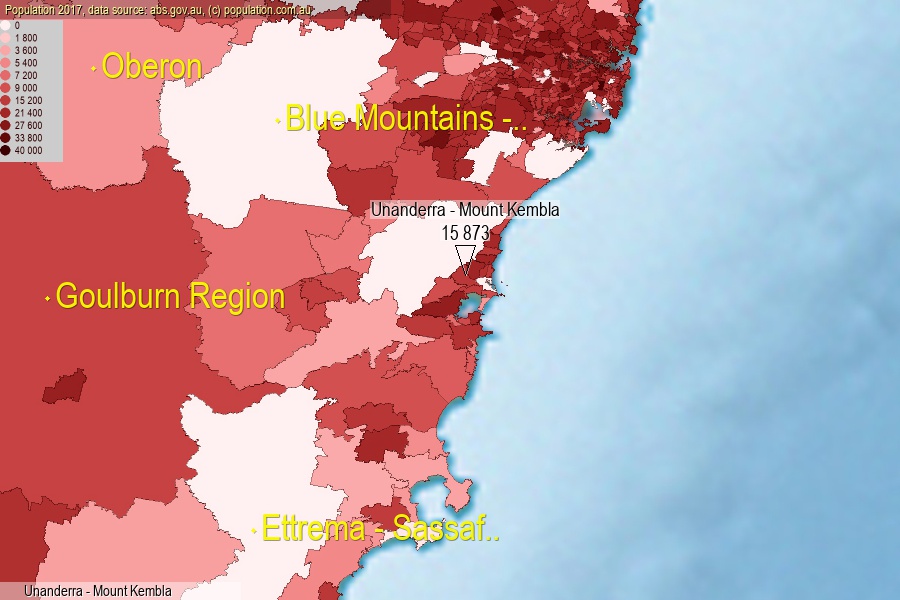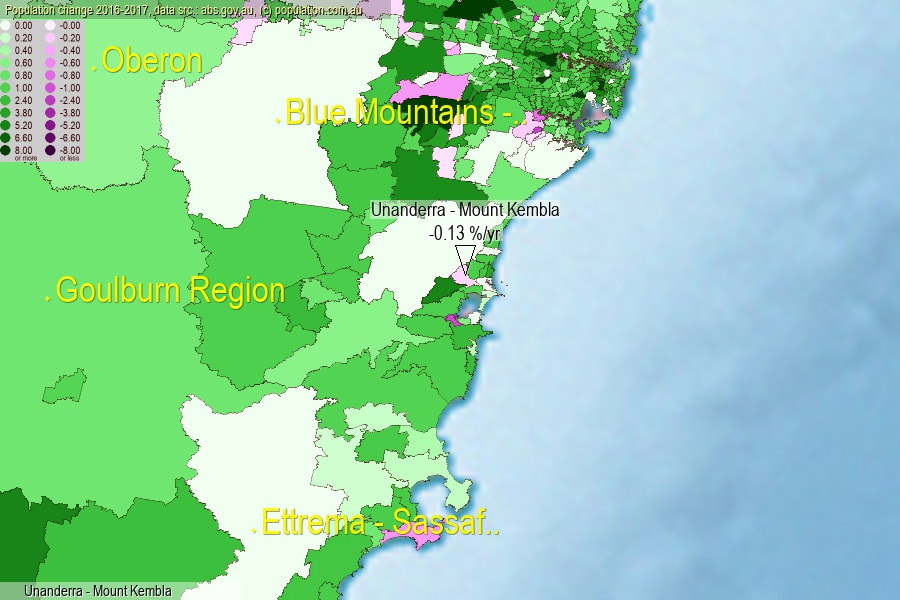 population.com.au
population.com.auLast official estimated population of Unanderra - Mount Kembla (as Statistical Area Level 2) was 15 873 people (on 2017-06-30)[2]. This was 0.06% of total Australian population and 0.2% of NSW population. Area of Unanderra - Mount Kembla is 25.10 km², in this year population density was 632.39 p/km² . If population growth rate would be same as in period 2016-2017 (-0.13%/yr), Unanderra - Mount Kembla population in 2025 would be 15 706. [0]



Click to enlarge. Unanderra - Mount Kembla is located in the center of the images.
Population [people], population density [p./km²] and population change [%/year] [2]
View borders » (new window) [4]
[1991-1992] +0.32 %/Yr.
[1992-1993] +0.33 %/Yr.
[1993-1994] +0.40 %/Yr.
[1994-1995] +0.50 %/Yr.
[1995-1996] +0.76 %/Yr.
[1996-1997] +1.15 %/Yr.
[1997-1998] +1.92 %/Yr.
[1998-1999] +0.75 %/Yr.
[1999-2000] +0.88 %/Yr.
[2000-2001] +1.46 %/Yr.
[2001-2002] -0.17 %/Yr.
[2002-2003] -0.14 %/Yr.
[2003-2004] +0.30 %/Yr.
[2004-2005] +0.01 %/Yr.
[2005-2006] -0.22 %/Yr.
[2006-2007] +0.63 %/Yr.
[2007-2008] +0.32 %/Yr.
[2008-2009] +0.10 %/Yr.
[2009-2010] +0.10 %/Yr.
[2010-2011] -0.73 %/Yr.
[2011-2012] -0.23 %/Yr.
[2012-2013] -0.02 %/Yr.
[2013-2014] -0.37 %/Yr.
[2014-2015] -0.22 %/Yr.
[2015-2016] -0.61 %/Yr.
[2016-2017] -0.13 %/Yr.
[0] Calculated with linear interpolation from officially estimated population
[1] Read more about SA2 and Australian Statistical Geography Standard (ASGS) on abs.gov.au
[2] Population data from Australian Bureau of Statistics (Population and density: 2017; change: 2016-2017)
[3] Digital Boundaries: Australian Statistical Geography Standard (ASGS) 2016.
[4] Border coordinates are simplifyed using Ramer-Douglas-Peucker algorithm.